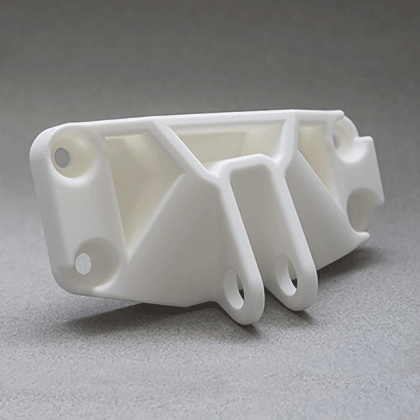Unlocking the Secrets of SLS Printing: Discover Its Game-Changing Applications and Benefits!
Selective Laser Sintering (SLS) printing technology has emerged as a transformative force in the 3D printing landscape. This innovative process utilizes a laser to fuse powdered materials, allowing for the creation of intricate and durable parts that were once thought impossible to produce. SLS printing has gained traction across various industries due to its ability to produce complex geometries and functional prototypes, making it a game-changer for design and manufacturing. In this article, we will delve into the intricacies of SLS printing technology, explore its diverse applications, and highlight the numerous advantages it offers to businesses and creators alike.

Understanding SLS Printing Technology
SLS printing, or Selective Laser Sintering, is a 3D printing technique that employs a powerful laser to selectively fuse powdered materials together to form solid structures. The process begins with a thin layer of powder being spread across a build platform. The laser scans the layer, fusing the particles together according to the digital model. Once the layer is complete, the platform lowers, and a new layer of powder is applied, repeating the process until the part is fully formed. Common materials used in SLS printing include nylon, polystyrene, and a variety of metal powders, each offering unique characteristics suitable for specific applications. This method not only allows for high precision and detail but also opens the door for innovative designs that traditional manufacturing methods cannot achieve.
Applications of SLS Printing
SLS printing has found its place in numerous industries, showcasing its versatility and efficiency. In the aerospace sector, SLS is utilized to produce lightweight, complex components that can withstand extreme conditions, significantly reducing the weight of aircraft parts. Similarly, in the automotive industry, manufacturers leverage SLS technology to create functional prototypes and production parts that enhance performance while minimizing material waste. The healthcare sector also benefits, with SLS enabling the production of custom prosthetics and dental devices tailored to individual patient needs. Furthermore, the consumer goods industry uses SLS printing to create unique products and packaging solutions, allowing for rapid prototyping and customization. These applications illustrate the broad reach and impact of SLS printing technology across various fields, making it an invaluable tool for innovation.
Advantages of SLS Printing
The advantages of SLS printing are vast, positioning it as a preferred choice for many manufacturing processes. One of the primary benefits is design flexibility; SLS allows for the creation of intricate geometries and designs that are difficult or impossible to achieve with traditional manufacturing methods. This capability not only fosters creativity but also leads to more efficient designs. Additionally, SLS printing is material-efficient, as surplus powder can often be reused in subsequent prints, reducing waste and lowering overall costs. The process also supports the production of complex assemblies in a single print, minimizing the need for assembly and enhancing structural integrity. Overall, the ability to produce functional and durable parts with minimal material waste makes SLS printing a highly advantageous option for businesses seeking to innovate.
Characteristics of SLS Printing
SLS printing is distinguished by several key characteristics that differentiate it from other 3D printing methods. One notable feature is layer adhesion; the laser's heat causes the powder particles to fuse together, resulting in strong inter-layer bonding that enhances the mechanical properties of the final product. Furthermore, SLS parts typically exhibit good surface finish, although some post-processing may be required to achieve the desired aesthetic quality. The nature of the SLS process also allows for the production of functional parts without the need for support structures, as the surrounding powder provides necessary support during printing. However, post-processing techniques such as sanding or chemical smoothing can be employed to further refine the surface finish. These characteristics highlight the unique aspects of SLS printing, making it a suitable choice for a wide range of applications.
Summary of SLS Printing Benefits and Applications
In summary, SLS printing technology represents a significant advancement in the world of 3D printing, offering a unique combination of design flexibility, material efficiency, and the ability to produce complex structures. Its applications span various industries, from aerospace and automotive to healthcare and consumer goods, showcasing its transformative potential. As businesses and creators continue to explore the capabilities of SLS printing, it is clear that this technology will play a pivotal role in shaping the future of manufacturing. For anyone interested in innovation and design, delving into the world of SLS printing could unlock new possibilities and elevate projects to new heights.







